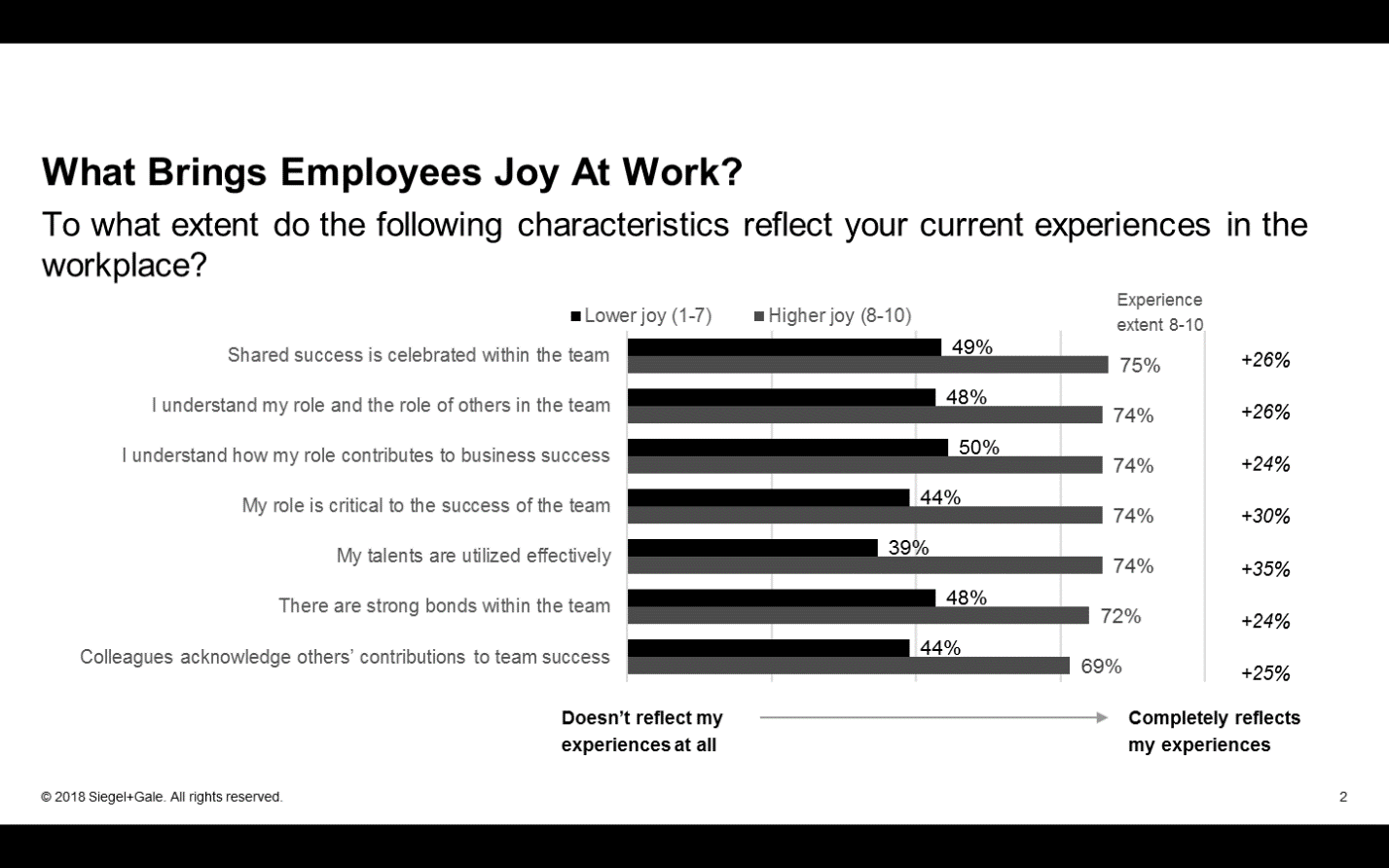Business should be joyful – just ask the sports world

France's players celebrate with manager Didier Deschamps after winning the World Cup final in July last year.
Image: REUTERS/Kai Pfaffenbach
Stay up to date:
leadership
The practical power of joy is so clearly evident across most human endeavours, I wonder why business leaders have not made joy a pillar of their performance strategies?
As a lifelong fan of team sports, I point to all the remarkable moments when success is linked to joy. When a team is performing at its awe-inspiring best, despite its limitations or challenges, every player – indeed the entire arena – experiences a brimming ecstasy that lifts the team even further. Success sparks joy. Joy fuels further success.
Can the joy that is so apparent in championship athletics be replicated in business? Absolutely. Joy within any team arises from a combination of harmony, acknowledgment, and impact – all of which we as leaders can engender in the business world and in our communities.
1. Harmony. Each player on a winning team is keenly aware of his or her distinct contribution to achieving the overarching goal. When a team effectively blends its players’ diverse talents, roles, and personalities into harmonious action, the whole exceeds the sum of its parts. (“No hero ball.”)
2. Acknowledgment. Great basketball coaches instruct their players that when they make a basket, they should point immediately to the teammate who made the pass that created the shot opportunity. Directly acknowledging a teammate’s “assist” reinforces the tangible behaviours that yield collective success. (“Team first.”)
3. Impact. Shared success is among the most fulfilling of human experiences, and can forge unusually strong and lasting bonds. Championship teams often reunite decades after their triumph to recapture the sense of joy they shared together – a connection they confess is among their most meaningful memories. Even on teams that do not win championships, personal connections often endure because teammates have made a lasting imprint on each other. (“Shared legacy.”)
Many businesses are investing heavily in technologies to develop such visceral connections – to link their people to each other, to customers and to other stakeholders. Hyper-connectivity is being embraced as central to sustaining operational competitiveness in the digital age, breaking down walls and boundaries. However, many companies are hitting speed bumps because their internal cultures get in the way. Employees habitually seek safety by staying within their own silos and comfort zones, resisting the change needed to fully embrace new ways of connecting and working.
To overcome this inherent obstacle, companies must foster a “culture of connectivity”, as is already so evident in the millennial generation. In such a culture, people are both inclined and prepared to apply evolving connectivity technologies to business strategy and operations. Connectivity – joyfully requesting and giving help, and freely sharing information – becomes second nature.
But technology is just the start, as our new survey shows. Three hundred and fifty employees of companies with $2bn+ revenues in a range of industries responded to a global December 2018 survey sponsored by AT Kearney.
Respondents were first asked to report how much joy they feel at work, on a 1-10 scale. They were then asked to rate (again on a 1-10 scale) how much each of a series of statements reflects their own experience at work. The study explored people’s workplace experiences across the Americas (40% of respondents), EMEA (40%), and APAC (20%).

This chart shows how employees who feel high levels of joy at work (light grey bars) responded to each statement, contrasted to how people who feel lower levels of joy (black bars) replied to the same set of statements.
The results point to a pronounced “joy gap” at work – and to its root cause. People who feel less joy on the job (black bars) also have fewer of the kinds of experiences (reflected in the series of statements) that visibly yield joy on athletic teams. The lesson? By providing their people more experiences that engender joy in any team setting, business leaders can tap more of the practical power of joy in their companies.
Business leaders tend to think a great deal about success, but rarely about joy. Chances are, few are even aware of “the joy gap” in their organization and the resulting lack of personal connection. That must change. Joy packs as much transformational punch as technology. Both are required to maintain the cohesion that helps large organizations nimbly communicate and adapt to unprecedented challenges. Technology provides the infrastructure for that connectivity, but the foundation must be a culture dedicated to the human experience of harmony, acknowledgment and impact. In sum, joy.
Don't miss any update on this topic
Create a free account and access your personalized content collection with our latest publications and analyses.
License and Republishing
World Economic Forum articles may be republished in accordance with the Creative Commons Attribution-NonCommercial-NoDerivatives 4.0 International Public License, and in accordance with our Terms of Use.
The views expressed in this article are those of the author alone and not the World Economic Forum.
Forum Stories newsletter
Bringing you weekly curated insights and analysis on the global issues that matter.
More on LeadershipSee all
Daniella Diaz Cely
May 27, 2025
Thomas Crampton
May 21, 2025
Christie Burley and Lindsey Prowse
May 20, 2025
Ignacio Bugueño Vilches and Franco Nieri Cabello
April 24, 2025
Robin Pomeroy
April 23, 2025





